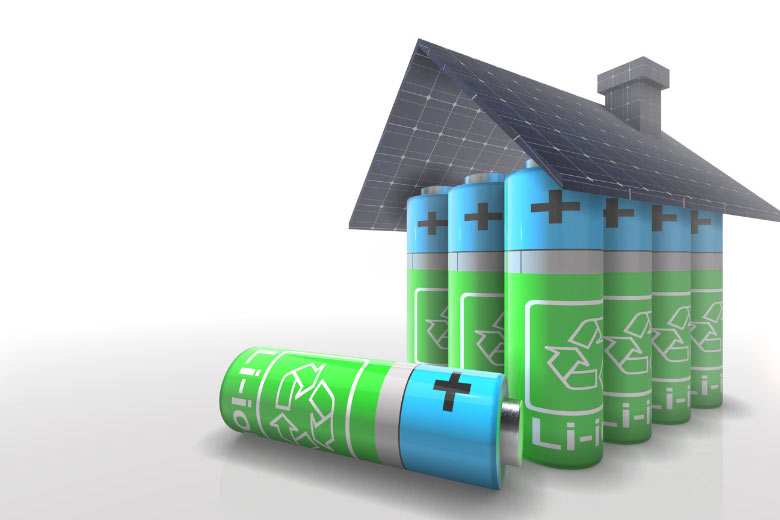How Storage Can Enhance Your Solar Rooftop Project?
Vinayak Kathare
January 2021

GOING BEYOND JUST SOLAR POWER, EMPLOYING BATTERY STORAGE
With a mature solar industry in India – the financial and carbon footprint benefits of a solar rooftop are obvious and widely known. However, the fact that these benefits can further be enhanced with energy storage is less explored. No doubt the cost of energy storage, especially of that of Li-Ion battery technology, is still partially prohibitive for widespread adoption of energy storage for all the possible applications where it provides a perfect technical solution. However, there are certain applications even today where storage provides commercial benefits too.MEET 100% OF YOUR ENERGY DEMAND WITH SOLAR-PLUS-STORAGE
First such application is for commercial clients is in high tariff states like Maharashtra– let us take the example of warehouses to elaborate this point. If you keep the solar capacity below contract demand, which is required as per the regulations –anywhere between 20 and 50% of total energy demand can be replaced with clean energy from rooftop solar. However, the same rooftop installation coupled with energy storage can cater to 100% of the client’s energy demand, including during peak hour.Such solutions can provide 20-30% more financial savings to clients and can be offered in the OPEX model as well. Even clients who cannot install more than 1MWp of solar capacity with net-metering, can install higher capacity with energy storage to cater to their peak hour demand and night-time demand. With rapid technological prowess and a declining trend in battery prices, these applications will become more and more commercially viable in months to come. Such applications might have to wait for 2 to 3 years more before they make commercial sense.
These applications where you are providing more than 5 hours of energy storage, alternative storage technologies such as Vanadium flow batteries should also be evaluated.

SOLAR CAPACITY-FIRMING WITH ENERGY STORAGE
Solar capacity firming – where an on-site solar power plant is synchronized with a thermal power plant, is the second application where energy storage has started to make commercial sense. The varying nature of solar power output – especially the sudden drops and increases during the monsoon season due to the passing of overhead clouds, asks for sudden ramping up or ramping down of thermal power plant for balancing of power. This not only causes stress on thermal power plants, making them run inefficiently, but some customers also end up paying a penalty to the distribution companies or higher tariffs for drawing balancing power from the grid. With energy storage, the power output curve of solar can be smoothened making the ramp-up or ramp-down demands from thermal power plant more gradual and within acceptable limits.
ENERGY STORAGE SOLUTIONS FOR INDUSTRIAL CONSUMERS
The third application of energy storage is for industrial customers who run batch processes and have an online UPS to cater to the same – an online UPS system can have an inherent energy loss of upto 8% which can be avoided by replacing it with an off-Line bi-directional inverter + battery storage. However, it is critical that such a solution have a response time of < 100 ms to switch from the On-Grid to Off-Grid mode to make sure the batch process goes uninterrupted. Such solutions are available in the market. Even though not strictly a solar rooftop application, the same PCS-plus-Storage solution can be stacked up for multiple applications, with or without solar.AFFORDABLE, CLEANER ALTERNATIVE TO DIESEL GENERATORS
Finally, there is the most obvious application of energy storage where a customer is facing daily power outage and ends up running the diesel generator extensively. In such cases, solar output could get curtailed while synchronizing it with a diesel generator. However, with energy storage, solar can run upto its full capacity and usage of diesel generator can be minimized. More than the commercial aspect, the concern for widespread usage of energy storage in such applications is the lingering question of whether the customer will start getting a stable power supply in near future, making his investment in storage redundant.For all these applications, and especially quite so for solar capacity firming, it is extremely important to capture and analyse large amount of data of the existing power demand and supply profiles. The fact that such data is not easily available, makes optimum sizing of energy storage challenging. In such cases, it is better to install energy monitoring devices and capture such data before sizing for energy storage. Also, it is important to acknowledge that each energy storage solution is a customized one for a particular requirement and only a thorough effort can result into an optimal solution.
There is little doubt that with Li-Ion battery costs falling down 15% YoY and advancements in alternative energy storage technologies, energy storage will become ubiquitous with solar rooftop in 4 to 5 years from now.